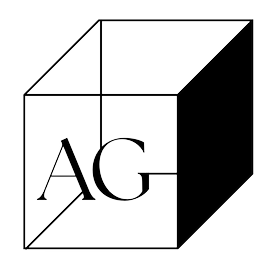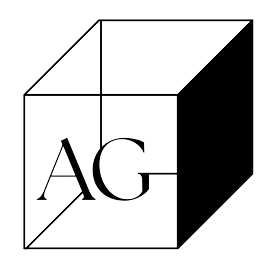
01 – Abandon Rate
Abandon rate is defined as the percentage of customers who start a process but leave before completing the intended action.
As a KPI, Abandon Rate can be helpful as a metric to measure customer engagement and lack of. Identifying the action that takes place prior to the point of leaving can identify areas of improvement that can be optimised to achieve greater engagement and subsequently, overall performance.
While most commonly referenced in the context of e-commerce stores, abandon rate can be used as a measure to isolate a potential cause and hypothesise why an action was not completed. In a digital context, it can pinpoint a specific feature and allow the marketer to shape a test or experiment to optimise performance. In a physical context, it can be used to train and coach staff to better tailor experiences to customer needs.
Occasionally, abandonment can also indicate that a customer has acquired the information they desired in that moment and have therefore, consciously chosen to end their journey. When this occurs, there can be a discrepancy between the customer needs and the commercial desires for the action marketing is looking to drive. To maintain targets, marketers must understand and monitor the rate of flow through the marketing funnel alongside abandonment rate to know that the customers they are attracting are aligned to business targets.
Shopping Carts
In the context of shopping, abandon rate is used to inform marketers of the volume of customers who demonstrated intent to purchase but who did not follow through.
In an e-commerce context, viewing each page and feature, from product listings through to “add to cart” button clicks, total cart or basket reviews and subsequently, form fields that are required to complete the checkout process can be referred to as a “fallout analysis”.
A “fallout analysis” uses abandon rate, aligned to a funnel view that indicates each specific page or feature that occurred prior to abandonment.
Examples in practice:

A high add to cart rate with a cart that contains multiple products may indicate shoppers are using the cart as a means to shortlist items for comparison. At this stage of the buyer journey the customer may not be ready to continue through to a purchase which may inflate an abandon rate. By introducing alternate features for shoppers to shortlist and compare different products, this hypothesis can be tested by offering an alternate method for shoppers to save and make comparisons between products.

ASOS “view bag” page. ASOS offers multiple options for adding products to a list of “favourites” while also offering for customers to “save for later” if they are still in the consideration phase.
Another example may include users who do not continue through to purchase after reaching an option to add a promotional code in the final steps of a checkout form. This may indicate a price conscious customer who may have left to search the web for a promotional code. By testing an always-on website banner that offers a code, a marketer could track the promotional code redemption rate (to be broken down in a chapter coming soon) and monitor whether abandon rate decreases as redemption rate increases.

ASOS showcases sticky, “always-on” banners that feature promotional codes, helping price conscious shoppers to feel they are acquiring a bargain.
Applications
In the context of an application, abandon rate can inform the volume of customers who lack determination and high intent to complete a process. An application might be for an education enrolment, insurance quote or credit card. Being able to discern the specific section or form field where abandonment occurs can provide insight into the level of intent or concern on the part of the customer who does not complete their application.
Examples in practice:
A customer who provides just enough details to be sent further information such as a quote for an amount they would be required to pay should they wish to continue with their application, may indicate they were not otherwise able to gain the pricing information they required in order to evaluate their needs and preferences. Sometimes this is done deliberately by marketers to encourage prospects to provide their contact details for further communications.

Example application process articulated by Swinburne University.
Another example could be a customer who abandons a process after being required to seek out, scan and upload copies of supporting documentation. This may indicate a lack of documentation availability which would block one from continuing with their application. Or it may indicate forgetfulness. There may not be a way to know for sure, though equally this insight may not be required or useful for decision making either.
Customer Service
In the context of customer service support channels, an abandonment rate can inform service professionals of potential friction or frustration points that may occur during the process of attempting to resolve a customer enquiry. Assessing these points where customers cease to engage, whether it be via phone, live chat, email or ticketing support, can provide valuable information into the effort to value equation.
Customers who seek personalised service information to resolve a query are often starting from a position of having experienced some challenge or difficulty to overcome. Customer service representatives, or those powering customer service software solutions would benefit from insight into the areas where abandonment occurs in order to hypothesise whether there are patterns that can be identified to remove or optimise particular moments.
Examples in practice:
An automated chat bot can be helpful in providing canned responses to frequently asked questions. When custom questions are asked and software attempts to connect the user with a human representative to nuance a specific answer to an enquiry, the time this connection takes must match the customer expectations and patience levels. If these expectations and delivery times do not match, an abandonment from engaging may result.

Example from Optus, Australian telecommunications company utilising Live Chat features for customer service enquiries.
Phone calls speaking with customer service representatives may also see abandonments, which may occur purposefully or accidentally if a connection is lost. Many customer service call centres request contact information immediately in case a line is disconnected. This way, if an abandonment occurs as a result of disconnection, the representative can attempt to retrieve and more accurately update the volume of abandonments that are not due to disconnection, but rather genuine loss of interest from a customer.
Overall, abandon rate can be useful to determine key moments to optimise a customer journey in order to drive increases in the number of desired actions that are taken, as aligned to marketing goals.

To calculate abandon rate, divide the number of actions that actually occurred by the number of moments of initial intent. Multiply by 100% to get a percentage.
Want to submit a foundational marketing metric for me to deep dive into? Reach out to me on LinkedIn or via email at kate@attributiongal.com All submissions will be attributed in the final manuscript.
The Latest in Marketing & Analytics
Latest … Google announces it will sunset many traditional attribution models this week. Specifically; first click, linear, time decay and position based models. A push, no doubt to encourage adoption and use of its in-platform DDA model which is calibrated using Google Signals (Google’s walled garden data acquired through all use of Google products) and industry based lift experiment results. Attribution is quickly shifting to asking businesses to either a “build your own MTA” or “choose your black box”. Another point of Google news, Google finally introduces Regex support for event creation in GA4.
Until next week (and the next Chapter).




Leave a Reply